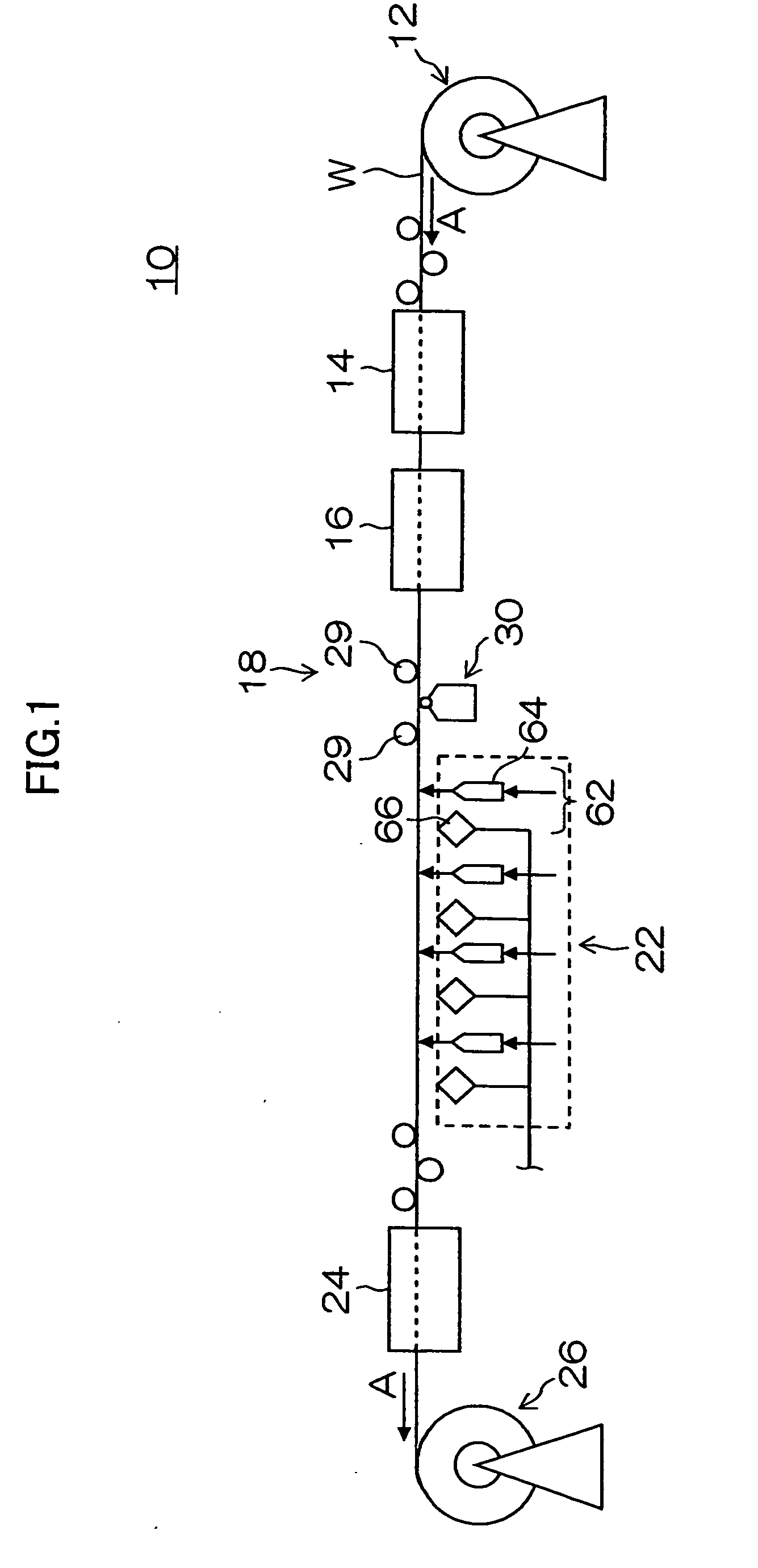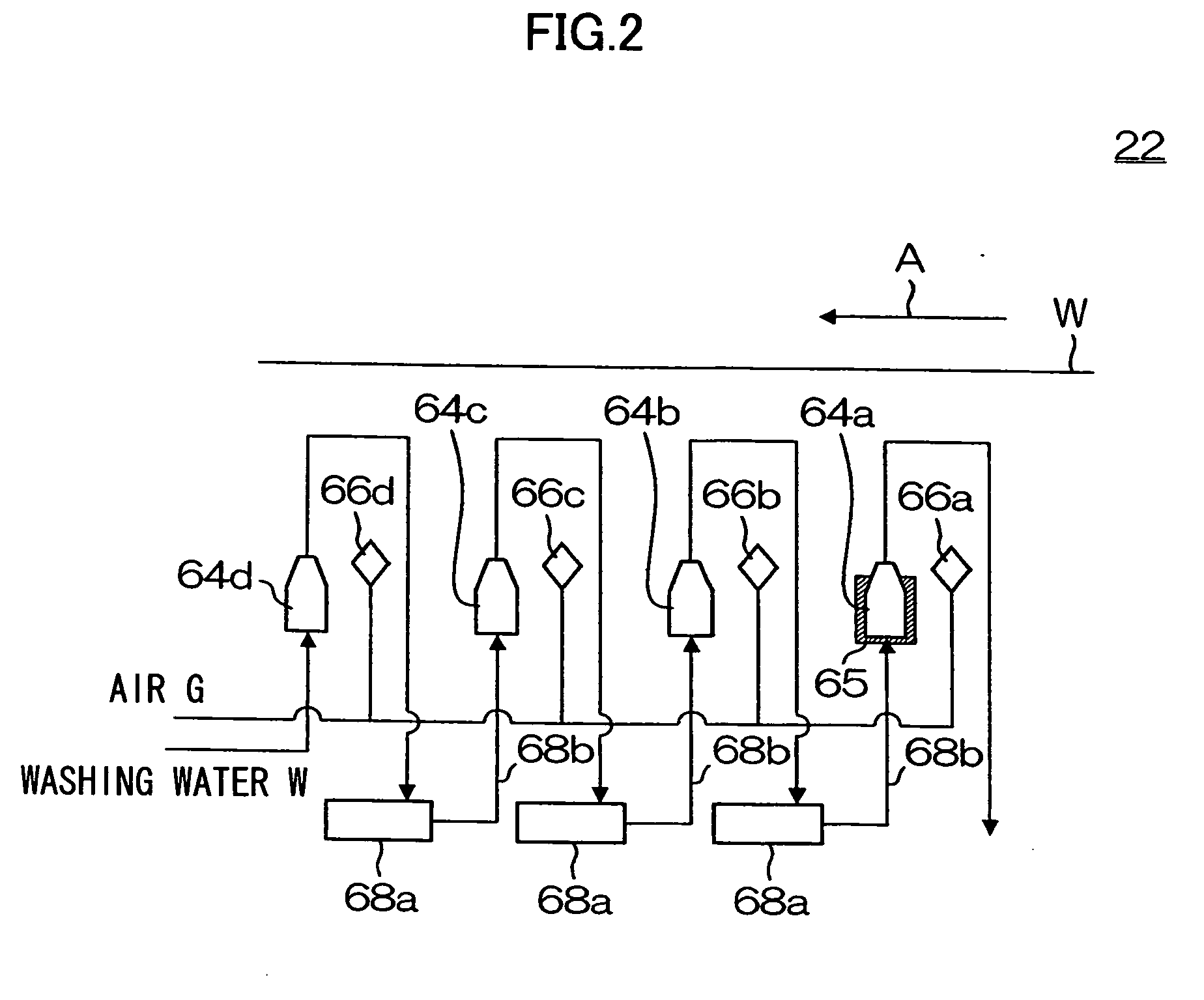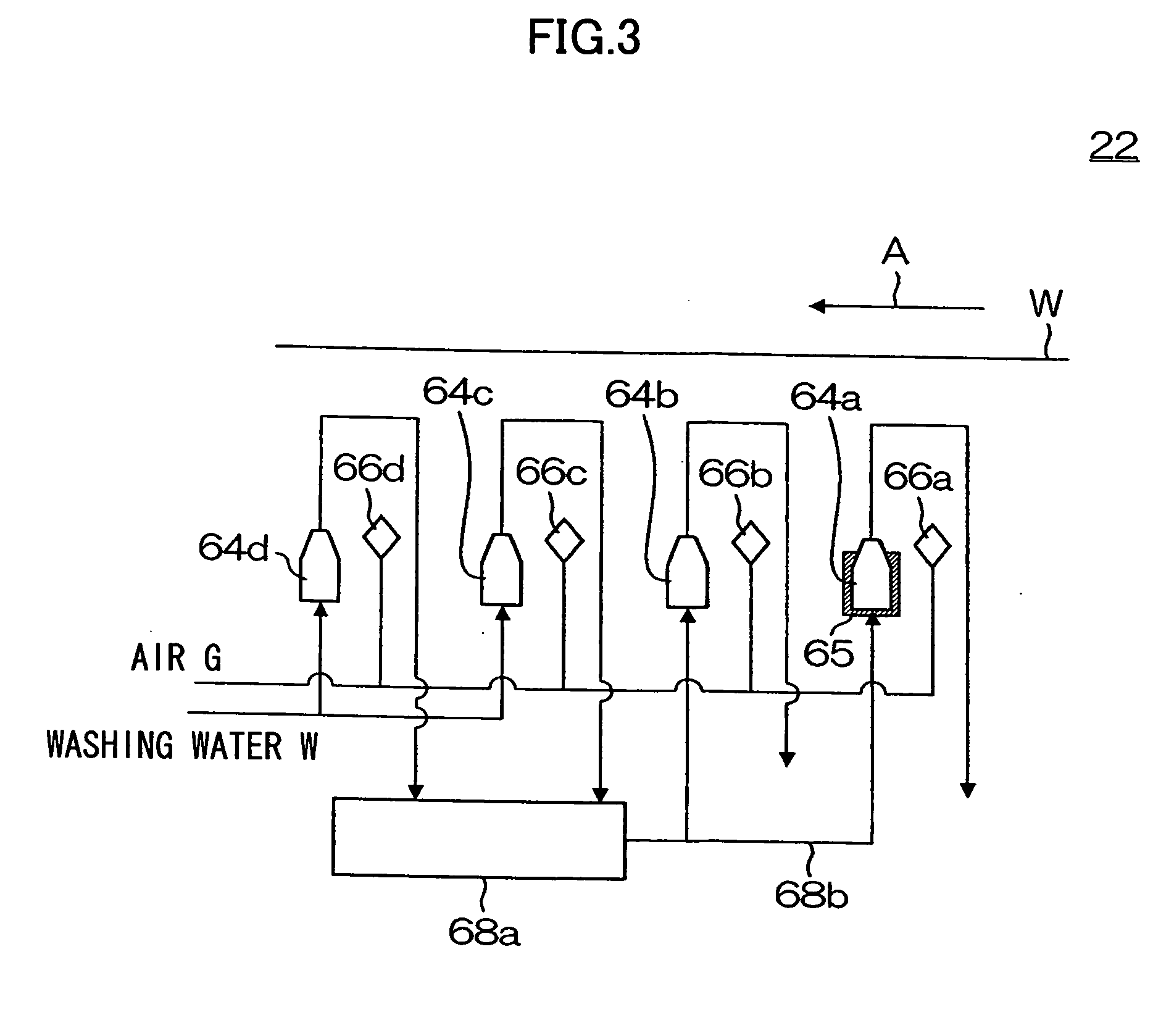Method and apparatus for alkaline saponification of polymer film
a polymer film and alkaline saponification technology, applied in the field of alkaline saponification of polymer films, can solve the problems of fine bending of cellulose ester films, inferior image quality of liquid crystal displays, and poor application prospects, and achieve low environmental load, low cost, and efficient use
- Summary
- Abstract
- Description
- Claims
- Application Information
AI Technical Summary
Benefits of technology
Problems solved by technology
Method used
Image
Examples
examples
[0142] The present invention will be described in detail by examples. It is to be understood that the examples herein shown are for the purpose of description and not of limitation.
[0143] In alkaline saponification line 10 shown in FIG. 1 (first half part), one side of a continuous web W of a cellulose acetate film (thickness: 100 μm, width: 1895 mm) was coated with an alkaline solution (1 N, KOH solution) in an amount of 14 cc / m2. Then, the web W was subjected to alkaline saponification at 110° C. for about 7 seconds, and the treated surface of the web W was coated with deionized water in an amount of 3 cc / m2 to dilute the alkaline solution. Then the web W was washed. The conveying speed of the web W was 20 m / min.
[0144] In washing section 22, the web W was washed while being conveyed at a speed of 20 m / min. The temperature of the washing water was set to 37° C.
[0145] In Example 1, washing was performed in washing section 22 of FIG. 2, provided that the number of water-washing / dr...
PUM
| Property | Measurement | Unit |
|---|---|---|
| temperature | aaaaa | aaaaa |
| boiling point | aaaaa | aaaaa |
| temperature | aaaaa | aaaaa |
Abstract
Description
Claims
Application Information
 Login to View More
Login to View More - R&D
- Intellectual Property
- Life Sciences
- Materials
- Tech Scout
- Unparalleled Data Quality
- Higher Quality Content
- 60% Fewer Hallucinations
Browse by: Latest US Patents, China's latest patents, Technical Efficacy Thesaurus, Application Domain, Technology Topic, Popular Technical Reports.
© 2025 PatSnap. All rights reserved.Legal|Privacy policy|Modern Slavery Act Transparency Statement|Sitemap|About US| Contact US: help@patsnap.com



